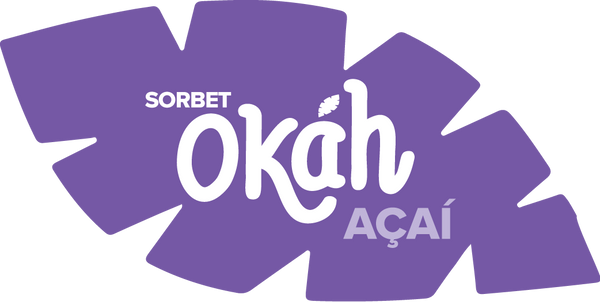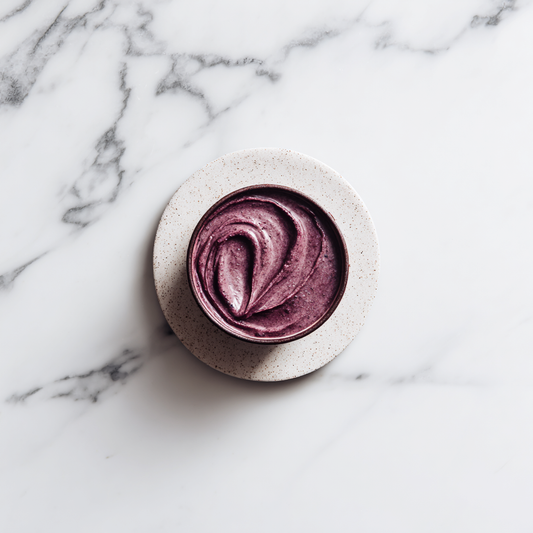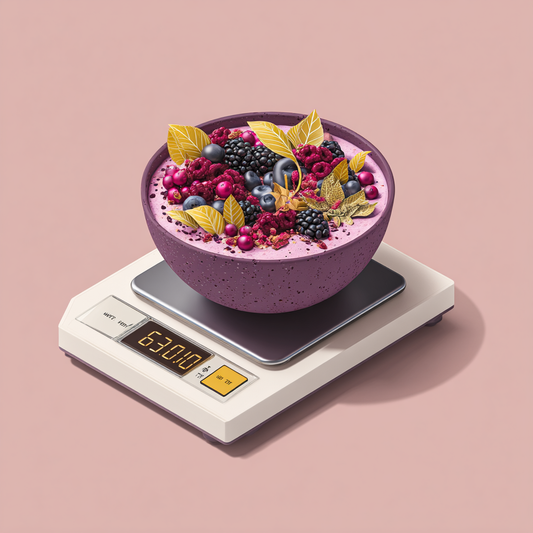
Are açaí bowls Brazilian? Origin, culture, and tradition
Imagine a flavour, a texture, a sensation so intrinsically tied to its place of origin that simply tasting it transports you somewhere else. For the people of the Amazon, açaí is a fundamental part of their heritage, a staple of their daily lives.
Yet, as this unique purple berry journeyed across continents, transforming into the vibrant and frosty bowls we now adore globally, are açaí bowls Brazilian in the way we usually see them? Is that Instagram-perfect creation, topped with granola, seeds, and sliced fruit, truly how they eat it back home?
It’s a great question! While the açaí berry itself is Brazilian, its presentation in a "bowl" has a rich story, and this article will untangle it all. We’ll also distinguish traditional Brazilian consumption from the popular global adaptation, helping you understand the incredible journey of this beloved food.
Are açaí bowls Brazilian, after all?
Depends on how you look at it. What most of the world calls an "açaí bowl" is often very different from how it's traditionally consumed in its Amazonian homeland. However, a specific type of açaí bowl did originate in Brazil and is incredibly popular there!
So, to better understand this, we need to distinguish two main forms of açaí consumption within this beautiful tropical country.

Traditional Brazilian açaí (the "original" way)
Deep in the Amazon region, particularly in states like Pará, açaí holds a very different meaning. Here, its consumption has savoury roots: locals often blend pure açaí pulp to a thick consistency, almost like a dense porridge, and consume it unsweetened or with just a tiny pinch of salt or some cassava flour.
It ends up as a fundamental part of a main meal, and you might see it served alongside fried fish, dried shrimp, or with traditional farinha d'água. This preparation highlights the açaí's unique earthy flavour without any added sweetness, making it a substantial food source rather than a dessert.
This authentic and ancient way of eating açaí is 100% Brazilian, representing centuries of cultural integration.
The Brazilian "açaí na tigela"
Fast forward to Brazil's coastal cities and you’ll find the direct ancestor of the global açaí bowl. This version is called "açaí na tigela" (ah-sah-EE nah chee-GEH-lah), which literally means "açaí in the bowl."
Here, açaí is typically blended with a little guarana syrup (a natural Brazilian stimulant and sweetener), often some frozen banana, or other fruits to make it sweeter and more palatable. The texture is still very thick, similar to a dense sorbet or soft-serve ice cream.
It became hugely popular among surfers, athletes, and beachgoers as an energising, refreshing snack. It was still simple, usually topped with just granola and banana. This "açaí na tigela" is a Brazilian invention, a delicious evolution that paved the way for its international success.
So, to reiterate, while the berry is ancient, the "açaí na tigela" bowl is Brazilian, but distinct from its Amazonian origins.

Also, the açaí berry is undeniably Brazilian!
Regardless of how it's served, the açaí berry itself is rooted deep in Brazilian soil!
The açaí palm (Euterpe oleracea), the tree that gives us this amazing fruit, is native to the Amazon rainforest, a vast ecosystem primarily located in northern Brazil. This palm thrives in specific conditions: it loves water, so you'll find it in abundance in the floodplains and wetlands, known locally as várzeas, which run along the vast network of Amazonian rivers.
It's a fruit of the water and the jungle, a gift from that unique environment.
For centuries, the açaí berry has been consumed by the indigenous communities and ribeirinhos (river people) living in the Amazon, providing essential energy and nutrition for their daily lives.
The “international” açaí bowl you know and love
The delicious "açaí na tigela" from Brazil's coast didn't stop there. It crossed oceans and continents, transforming further into the global phenomenon we see everywhere today.
Its popularity exploded rapidly across North America, Europe, Australia, and Asia. As it travelled, it sometimes underwent even further sweetening to suit a wider range of international palates. Blenders included more syrups or various fruit blends, making the base intensely sweet.
The indulgent toppings are a defining characteristic, which intensifies what was already happening in Brazil's trendier spots. The international açaí bowl features a vast array of toppings, which include superfoods like chia seeds and goji berries, multiple types of nuts and nut butters, shredded coconut, chocolate chips, and elaborate drizzles.

This globally adapted version became a full meal replacement or a dessert-like indulgence. While it often retains a "healthy, tropical, Brazilian" vibe, it sometimes leans heavily into indulgence, moving away from its balanced roots, though healthy options exist – see below!
Making a delicious traditional açaí bowl at home
Now that you understand açaí's journey from Amazonian staple to global sensation, you can enjoy your bowl with a deeper appreciation. We’ll walk you through how to make a tasty açaí bowl at home while providing pointers on how to make it even better without making it a calorie bomb!
Start with pure açaí
This is the golden rule for any açaí bowl: ALWAYS choose pure and unsweetened frozen açaí pulp.
This is non-negotiable for two reasons: it gives you the authentic, earthy taste of the berry, and it provides complete control over the sweetness. If you use a pre-sweetened base, you lose both authenticity and control while also ballooning your bowl’s calorie count.
Blending liquids

Use minimal liquid when blending to achieve açaí’s signature thick consistency. Usually, you only need a splash of liquid to get the blender going, and popular choices include water, coconut water, or plant-based milks.
Yes, liquids will have a subtle influence over your açaí bowl’s flavour, but their main job is to help your blender deal with the frozen pulp and bring it to the perfect texture.
Experiment with simplicity
If you’re going for a traditional Brazilian açaí bowl, try using only Okah’s pure açaí pulp, slices of frozen banana for sweetness, and perhaps sprinkle some granola to top it off. For an even more authentic Amazonian experience, try a sprinkle of farinha d'água (crispy cassava flour) – it’s a delightful and traditional textural contrast!
… or be careful with your toppings!
While the world loves indulgent-looking açaí bowls with colorful and sugary toppings, try to let açaí’s unique flavour shine through. Avoid excessive sugars or too many overpowering toppings that completely mask the berry's distinct character.
For the perfect balance, choose simple additions like sliced fruits (mango, banana, kiwi, and berries go very well with açaí), a small sprinkle of nuts and seeds, shredded coconuts, cacao nibs, and maybe a light drizzle of pure maple syrup if you need the added sweetness.

So - are açaí bowls Brazilian? Pretty much!
In the end, though, açaí bowls are a delicious story of adaptation. Sure, the açaí berry is a gift from the Amazon, and the "açaí na tigela" might have evolved in Brazil. But what you see across the globe is a creative take built on those foundations!
You now have the knowledge to craft your perfect açaí bowl, honouring its roots or adding your unique flair. It all begins with an uncompromised pure açaí base, and we at Okah Superfoods perfectly understand this.
We offer 100% pure and responsibly sourced frozen açaí pulp across the UK. We believe in empowering you to create authentic, incredible bowls, every single time, by providing the quality foundation you deserve.
See for yourself why quality makes a difference by checking out our products!



